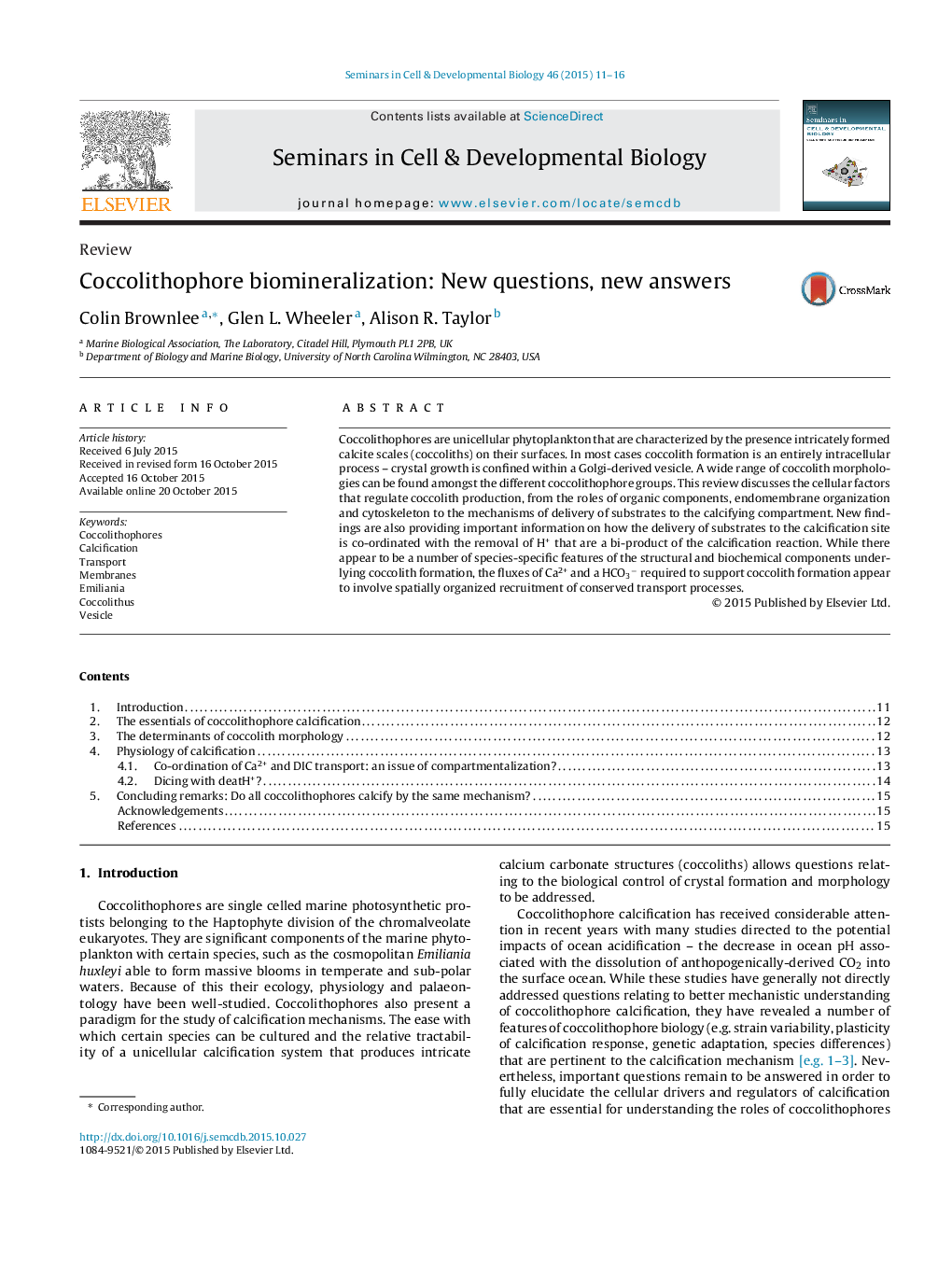| Article ID | Journal | Published Year | Pages | File Type |
|---|---|---|---|---|
| 2202536 | Seminars in Cell & Developmental Biology | 2015 | 6 Pages |
Coccolithophores are unicellular phytoplankton that are characterized by the presence intricately formed calcite scales (coccoliths) on their surfaces. In most cases coccolith formation is an entirely intracellular process – crystal growth is confined within a Golgi-derived vesicle. A wide range of coccolith morphologies can be found amongst the different coccolithophore groups. This review discusses the cellular factors that regulate coccolith production, from the roles of organic components, endomembrane organization and cytoskeleton to the mechanisms of delivery of substrates to the calcifying compartment. New findings are also providing important information on how the delivery of substrates to the calcification site is co-ordinated with the removal of H+ that are a bi-product of the calcification reaction. While there appear to be a number of species-specific features of the structural and biochemical components underlying coccolith formation, the fluxes of Ca2+ and a HCO3− required to support coccolith formation appear to involve spatially organized recruitment of conserved transport processes.
